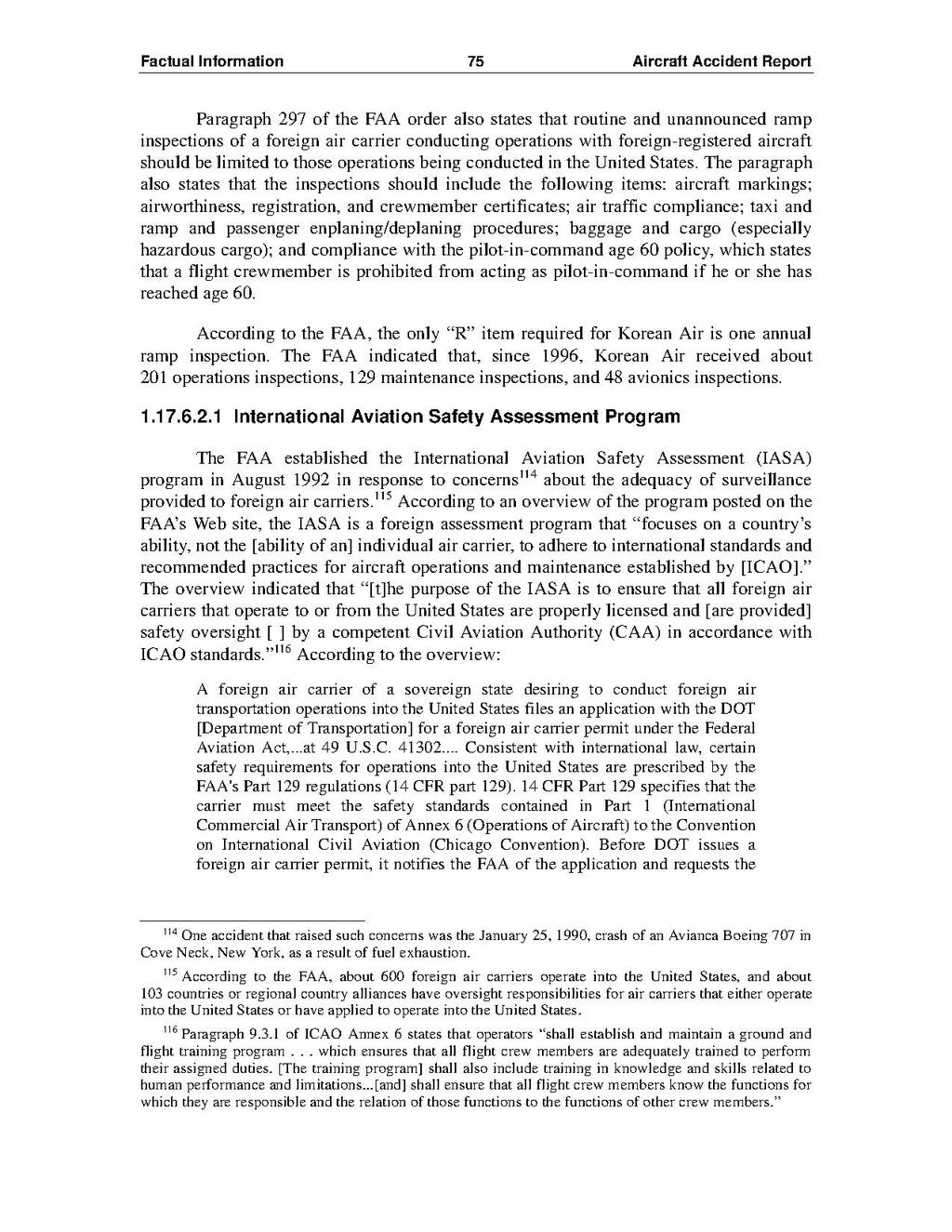Paragraph 297 of the FAA order also states that routine and unannounced ramp inspections of a foreign air carrier conducting operations with foreign-registered aircraft should be limited to those operations being conducted in the United States. The paragraph also states that the inspections should include the following items: aircraft markings; airworthiness, registration, and crewmember certificates; air traffic compliance; taxi and ramp and passenger enplaning/deplaning procedures; baggage and cargo (especially hazardous cargo); and compliance with the pilot-in-command age 60 policy, which states that a flight crewmember is prohibited from acting as pilot-in-command if he or she has reached age 60.
According to the FAA, the only "R" item required for Korean Air is one annual ramp inspection. The FAA indicated that, since 1996, Korean Air received about 201 operations inspections, 129 maintenance inspections, and 48 avionics inspections.
1.17.6.2.1 International Aviation Safety Assessment Program
The FAA established the International Aviation Safety Assessment (IASA) program in August 1992 in response to concerns[1] about the adequacy of surveillance provided to foreign air carriers.[2]According to an overview of the program posted on the FAA's Web site, the IASA is a foreign assessment program that "focuses on a country's ability, not the [ability of an] individual air carrier, to adhere to international standards and recommended practices for aircraft operations and maintenance established by [ICAO]." The overview indicated that "[t]he purpose of the IASA is to ensure that all foreign air carriers that operate to or from the United States are properly licensed and [are provided] safety oversight [ ] by a competent Civil Aviation Authority (CAA) in accordance with ICAO standards."[3]
According to the overview:
A foreign air carrier of a sovereign state desiring to conduct foreign air transportation operations into the United States files an application with the DOT [Department of Transportation] for a foreign air carrier permit under the Federal Aviation Act,...at 49 U.S.C. 41302.... Consistent with international law, certain safety requirements for operations into the United States are prescribed by the FAA's Part 129 regulations (14 CFR part 129). 14 CFR Part 129 specifies that the carrier must meet the safety standards contained in Part 1 (International Commercial Air Transport) of Annex 6 (Operations of Aircraft) to the Convention on International Civil Aviation (Chicago Convention). Before DOT issues a foreign air carrier permit, it notifies the FAA of the application and requests the
- ↑ One accident that raised such concerns was the January 25, 1990, crash of an Avianca Boeing 707 in Cove Neck, New York, as a result of fuel exhaustion.
- ↑ According to the FAA, about 600 foreign air carriers operate into the United States, and about 103 countries or regional country alliances have oversight responsibilities for air carriers that either operate into the United States or have applied to operate into the United States.
- ↑ Paragraph 9.3.1 of ICAO Annex 6 states that operators "shall establish and maintain a ground and flight training program . . . which ensures that all flight crew members are adequately trained to perform their assigned duties. [The training program] shall also include training in knowledge and skills related to human performance and limitations...[and] shall ensure that all flight crew members know the functions for which they are responsible and the relation of those functions to the functions of other crew members."
